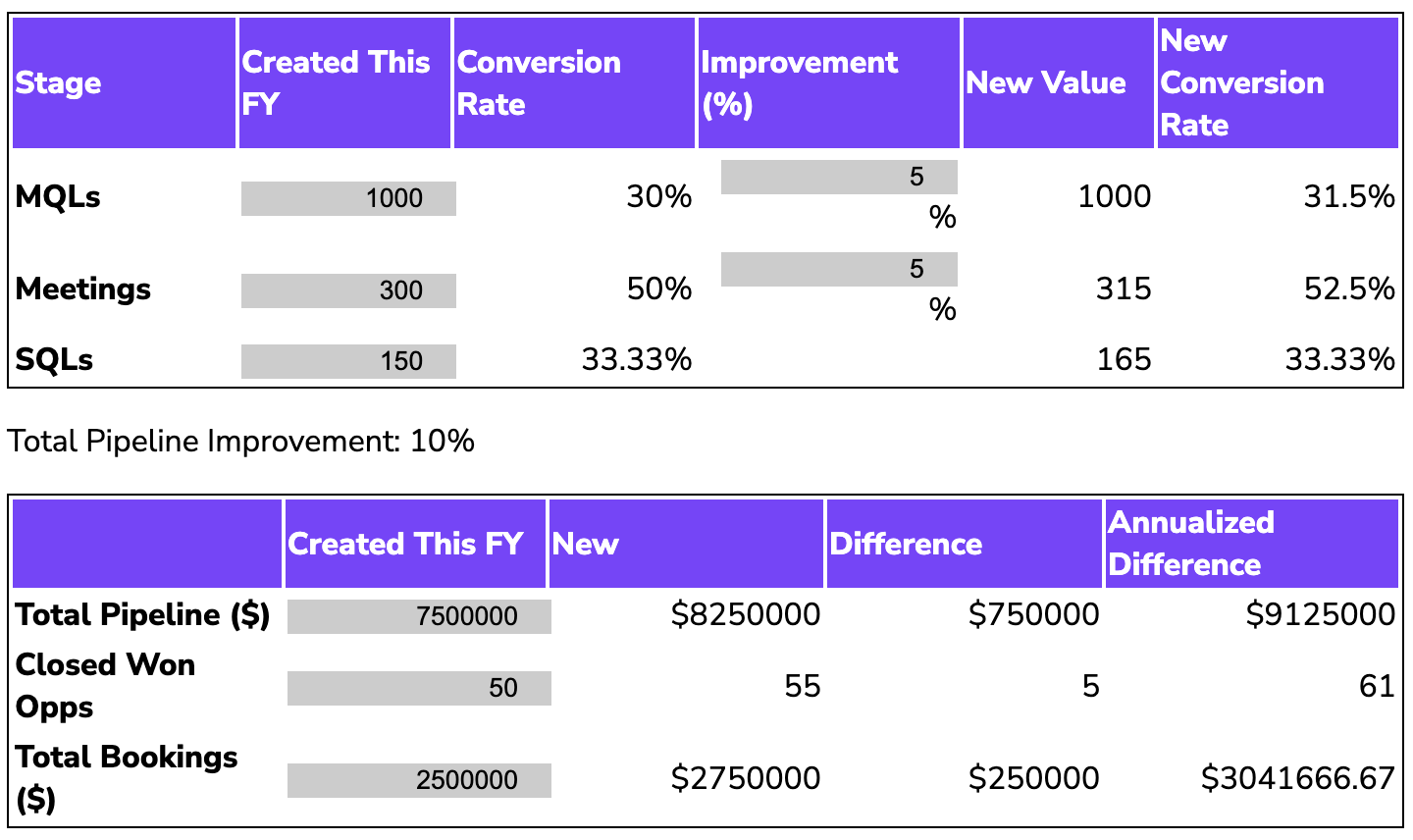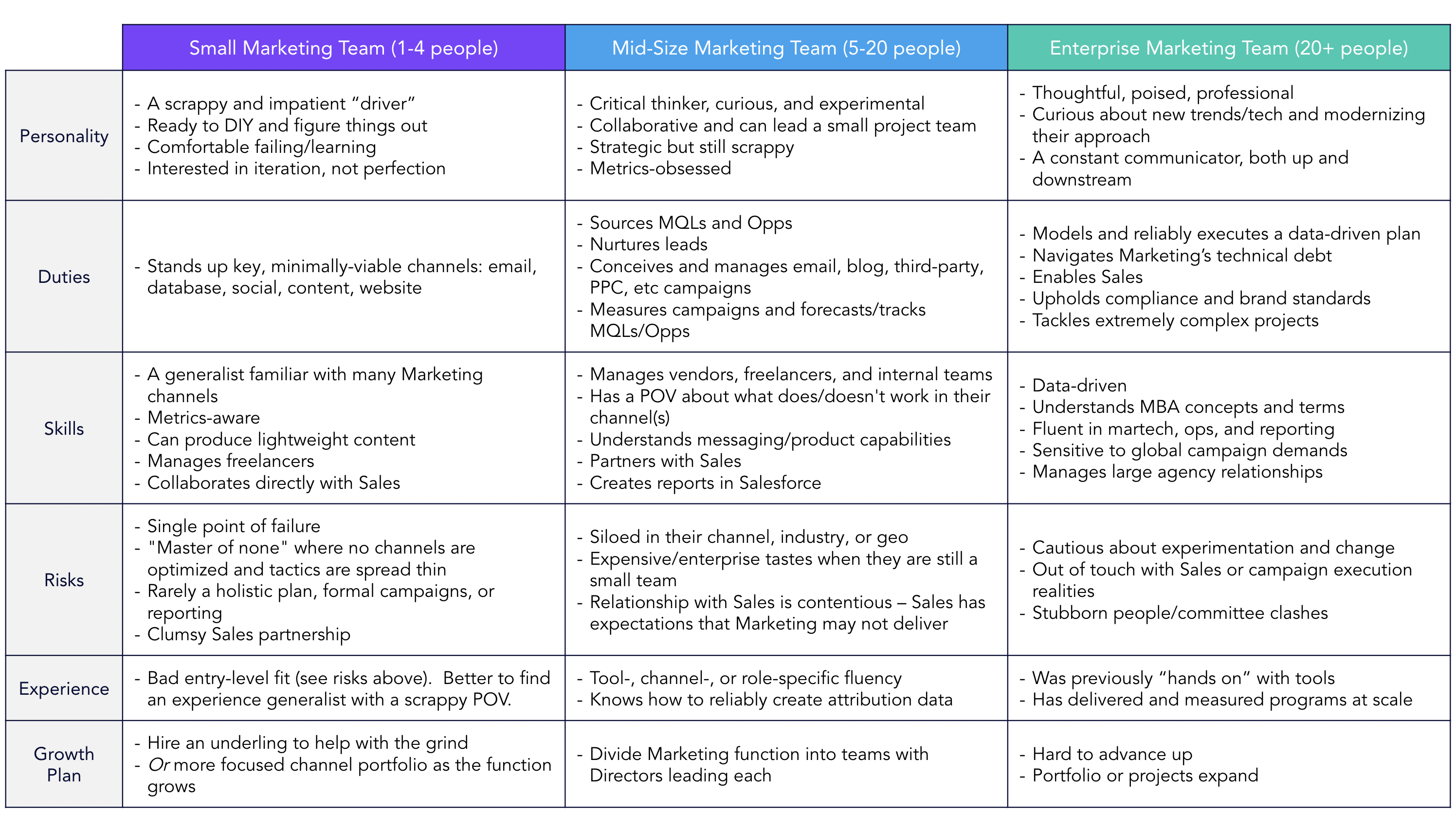We all know in-person connections are valuable, but in the age of cookies, clicks, and addictive analytics, it’s important to show quantitatively how your event strategy is driving pipeline. And it’s even better if you measure event ROI in Salesforce (after all if it isn’t in Salesforce, it didn’t happen).
>> Related: Using Salesforce Custom Objects to Track Funnel History <<
There are two approaches to measuring the ROI of an event. The first is manual and outside of Salesforce, but at least we’re evaluating an event beyond how busy the traffic “felt”. The second automatically measures event ROI in Salesforce, but candidly it requires some TLC from your Salesforce Admin, and for Sales and Marketing to add contacts to relevant campaigns and opportunities.
The (Cringe!) Manual Approach – Scorecards
Scorecards are straightforward. A sales rep who attends the event fills out a spreadsheet with columns such as:
- Job title – X/10
- Annual revenue – X/10
- Conversation type – X/10
- Industry – X/10
Each rep is recording the value/match, so the closer the match, the higher the score. Imagine a lead that perfectly aligned with the company’s target industry and title, but was only interested in entering the raffle. Their score might be:
- Job title – 10/10
- Annual revenue – 10/10
- Conversation type – 0/10
- Industry – 10/10
That’s 30 points total. Now imagine a looky-loo who has a long conversation with your Solution Engineer, but turns out to be a student. Their score might be:
- Job title – 0/10
- Annual revenue – 0/10
- Conversation type – 10/10
- Industry – 0/10
So this lead is only worth 10 points.
This method requires reps to (ahem) understand their target industries and titles. They also have to keep accurate tabs of their conversations, which is tough when the booth is busy.
After the event, they pass their scores to the marketing event coordinator, who compiles the average value of leads. An astute event marketer would have pre-determined a range “of success” (such as 25+ points per conversation) beforehand and can somewhat empirically decide if the event was worthwhile.
The Problem with Manual Scorecards
My issue with manual scorecards is not that they’re error prone and tough to prioritize when traveling. My issue is that not one field in the manual scorecard includes “Created Opportunity” or “Opportunity Stage Progressed” or “Potential Partnership.”
Call me crazy, but isn’t the measure of any campaign’s success directly tied to revenue!? We spent X and Closed Y, and Y was more than X? The key performance indicators for any and every campaign are whether you’re sourcing or influencing opportunities.
The Automated Approach – Salesforce Campaigns and Opps
Ready to report on how your events influence your pipeline?
First you need to get the event data into Salesforce campaigns and opportunities:
- Everyone you spoke to at the conference has to be added to the Salesforce campaign and associated with a correct campaign responded status.
- Everyone you spoke to at the conference must be added to the relevant opportunity.
Pretty simple, but it requires some discipline.
Once everyone is in Salesforce and added to the relevant opportunities, there are three ways we recommend measuring the value of events:
1.) Newly Created Opportunities:
Definition: A contact that Sales had a meaningful conversation with and was then attached to a newly created opportunity within 3 months after the conference.
Value: The value is the estimated deal size of the new opportunity.
Example: Sales rep Devon meets Avery from Acme at HIMSS. There isn’t a current opportunity for Acme. After HIMSS, Devon further qualifies Avery and opens a new opportunity where Avery is listed as a contact on the opp. Devon estimates the opportunity value at $500.
2.) Influenced Existing Opportunities:
Definition: A contact from a company with an Open opportunity before the event happened, where the opportunity stage moved forward (not closed but progresses in stage) after the conference.
Value: The value is the estimated deal size of the existing opportunity.
Example: Sales rep Devon meets Iris from Initech. There’s an open opportunity for Initech worth $800. After HIMSS, Devon adds Iris to the open Initech opportunity.
3.) Closed/WON Opportunities:
Definition: A contact from a company with an Open opportunity before the event happened, where the opportunity stage moves forward to “Closed/Won” after the conference.
Value: The value is the closed TCV (total contract value) on the closed Opportunity.
Example: Sales rep Devon meets George from Globex at HIMSS. There’s an open opportunity for Globex worth $800. After HIMSS, Devon adds George to the open Globex opportunity. After the event, the opportunity closed/WON, and the total contract value was $1,000.
Measuring Event ROI
So let’s say your total investment in HIMSS was $300. Using my three examples above, we add the opportunity and closed values together: $500 + $800 + $1,000 = $2300.
And we use a standard ROI formula to determine the ROI:
$2300 (Current Value of opportunities) – $300 (Cost of Event) / $300 (Cost of Event) = 666.6% (your ROI)
This is a manual example, but SFDC campaign reporting can do this calculation.
Building the Reports in Salesforce
So what settings in Salesforce should be enabled on the campaign object so you can run event-influenced-opportunities or event-created-opportunities reports?
This is the time to talk with your Salesforce admin, who will know how to tackle Salesforce Campaign Influence and Auto-Association settings. Ultimately you’ll use the report type “Campaigns with Influenced Opportunities.”
Real talk: hope is not a strategy! This robust Lead Gen Plan template maps how many leads and opps you need to generate each quarter.



